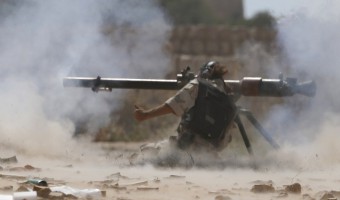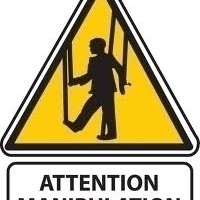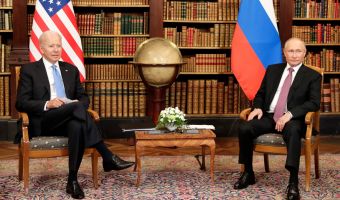In primo luogo, perché l’opinione pubblica mondiale continua a seguire una versione diversa?” E’ quanto si chiede Rainer Hoffman, il corrispondente del Faz (il principale quotidiano economico tedesco) dalla Siria. Già la scorsa settimana l’inchiesta di Hoffman sul posto aveva rivelato che i morti nella strage di Houla erano alawiti e sciiti cioè le due minoranze che sostengono il governo di Assad e ritenuti nemici dai gruppi estremisti sunniti che vi si oppongono. Herman giustamente precisa che “E ‘indubbio che durante i primi mesi del conflitto, quando l’opposizione non era ancora in possesso di armi ed era indifesa, le atrocità venivano dal regime. Il presupposto più ovvio era che questo avrebbe continuato. Inoltre, i media di stato siriani non godono di alcuna credibilità. Usano gli standard di etichettatura come “bande armate terroristiche” dall’inizio del conflitto, mentre nessuno li ritiene così. Fatta questa premessa che nulla concede al potere in Siria. Hoffman denuncia come “Due mezzi di comunicazione, il canale di notizie araba Al Jazeera e Al Arabiya sono diventate le principali fonti anche quando i loro proprietari, Qatar e Arabia Saudita, sono coinvolti attivamente nel conflitto”.. Non senza ragione -continua Hoffman – si conferma il detto che “In guerra, la verità è la prima vittima”. “In secondo luogo, perché, nel contesto della guerra civile, viene messa in dubbio la versione plausibile? Negli ultimi mesi molte armi sono state introdotte di contrabbando in Siria e che i ribelli possiedono ormai armi di medie dimensioni.” Ogni giorno più di 100 persone vengono uccise in Siria con circa un uguale numero di morti su entrambi i lati. L’illegalità crescente ha portato ad un’ondata di sequestri e quindi facilita la resa di conti su vecchie controversie Se si guarda attraverso le pagine di Facebook o si parla con la Siria: tutti raccointano di storie quotidiane di “pulizia religiosa” – di persone che vengono uccise solo perché sono alawita o sunnita” scrive Rainer Hoffman. “Perché, in questo contesto, i testimoni siriani (nella mia relazione) vengono considerati credibili? Perché non appartengono ad alcun parte del conflitto, ma sono presi in mezzo e non hanno interessi diversi da quelli di voler fermare un ulteriore escalation della violenza e nessuno vuole rivelare la propria identità”. Infine scrive ancora Hoffman “In un periodo di non è possibile la verifica indipendente di tutti i fatti sul posto, non ci può essere la certezza che tutti i dettagli siano accaduti esattamente come descritto. Anche se il massacro ha avuto luogo a Houla nella versione qui descritta, non è possibile trarre conclusioni da essa per spiegare altre atrocità. Così come avvenuto prima di ogni strage in Kosovo, esse dovranno essere esaminate singolarmente dopo questa guerra”..
*******
Qui di seguito l’articolo originale in inglese di Rainer Hoffman sulla Frankfurther Allgemeine Zeitung di oggi
A SECOND (*) ARTICLE BY RAINER HOFFMAN ON THE HULA MASSACRE
Syria: “The Extermination” by Sunni rebel forces
A well regarded and qualified author of the prime German daily Frankfurter Allgemeine Zeitung (FAZ)reported how the recent massacre in Houla, Syria, was perpetrated by Sunni rebel forces. In a new piece the reporter, Rainer Hermann, extends on the first one and explains why his reporting is correct and why other reporting was terribly wrong.
16 JUNE 2012
The Houla massacre was a turning point in the Syrian drama. There was great worldwide outrage when 108 people were killed there on May 25, among them 49 children. Calls for a military intervention to end the bloodshed became louder and the violence in Syria has since steadily escalated. Based on Arab news channel and the visit of UN observers on the following day, world opinion almost unanimously blamed the regular Syrian army and the Syrian regime’s Shabiha militia for the massacre.
In the past week and based on reports from eyewitnesses theFrankfurter Allgemeine Zeitung put this version into question. It reported that the civilians killed were Alawites and Shiites. They were deliberately killed by armed Sunnis in Taldou, a town in the plains of Houla, while fierce fighting between the regular army and Free Syrian Army was taking place at checkpoints around the village. Our report was taken up by many media outlets worldwide and was rejected by many as implausible. We have therefore to ask four questions: Why did the world opinion so far followed a different version? Why does the context of the civil war makes the doubted version plausible? Why are the witnesses credible? What other facts support the report?
© F.A.Z.
Firstly, why world opinion follow a different version? It is undoubted that during the first months of the conflict, when the opposition did not yet possess weapons and was defenseless, all atrocities were done by the regime. The assumption is therefore obvious that this would continue. [1] Furthermore, the Syrian state media enjoy no credibility. They use the standard labeling “armed terrorist gangs” since the beginning of the conflict. Thus no one believes them, when that is indeed the case. Two media outlets, the Arab news channel Al Jazeera and Al Arabiya have become key sources even as their owners, Qatar and Saudi Arabia, are two states which are actively involved in the conflict. Not without reason do we know the saying “In war, truth dies first.”
Secondly, why is, in the context of the civil war, the doubted version plausible? During recent month many weapons have been smuggled into Syria and the rebels have long had mid-sized weaponry. Every day more than 100 people are killed in Syria with about equal numbers of dead on both sides. The militias that operate under the banner of the Free Syrian Armycontrol wide parts of the provinces of Homs and Idlib and extend their dominion over other parts of the country. The increasing lawlessness has led to a wave of criminal kidnappings and also facilitates the settling of old disputes. If one looks through Facebook pages or talks to Syrians: Everyone knows everyday stories of “religious cleansing” – of people being killed just because they are Alawite or Sunni.
The plain of Houla, which lies between the Sunni city of Homs and the mountains of the Alawites, is predominantly inhabited by Sunnis and is burdened by a long history of sectarian tensions. The massacre took place in Taldou, one of the largest sites of Houla. Of the names of civilians killed, 84 are known. These are the fathers, mothers and 49 children of the family Al Sayyid and two branches of the family Abdarrazzaq. Residents of the city state that these were Alawites and Muslims who had converted from Sunni to Shia Islam. A few kilometers away from the border with Lebanon, this made them suspect of being sympathizers of Hezbollah, detested among Sunnis. Additionally killed in Taldou were relatives of the government loyal member of parliament Abdalmuti Mashlab.
The homes of the three families are located in different parts Taldous. The members of the families were targeted and killed up to one exception. No neighbor was injured. Local knowledge was a prerequisite for these well-planned”executions”. The AP news agency quoted the only survivor of the family Al Sayyid, the eleven year old Ali, as saying: “The perpetrators were shaved bald and had long beards.” This is the look of fanatical jihadists, not of the Shabiha militia. The boy said he survived because he had pretended to be dead and smeared himself with the blood of his mother.
Sunni rebels perpetrate “liquidation” of all minorities
On April 1 the nun Agnès-Maryam, from the monastery of Jacob (“Deir Mar Yakub”) which lies south of Homs in the village of Qara, described in a long open letter the climate of violence and fear in the region. She comes to the conclusion that the Sunni insurgents operate a stepwise liquidation of all minorities. She describes the expulsion of Christians and Alawites from their homes, which are then occupied by the rebels, and the rape of young girls, who the rebels pass off as”war booty”; she was an eye witness when the rebels killed a businessman in the street of Wadi Sajjeh with a car bomb after he refused to close his shop and then said in front of a camera from Al Jazeera that the regime had committed the crime. Finally she describes how Sunni insurgents in the Khalidijah district of Homs locked Alawite and Christian hostages into a house and blew it up only to then explain that this was an atrocity of the regime.
Why are, in this context, the Syrian witnesses (in my report) regarded as credible? Because they do not belong to any party of the conflict, but are caught in the middle and have no other interest than to stop a further escalation of violence. Several such people have already been killed. Therefore, no one wants to reveal their identity. In a period in which an independent review of all facts on the spot is not possible there can be no certitude that all details have happened exactly as described. Even as the massacre in Houla took place in the version described here, no conclusions can be drawn from it for other atrocities. As before in Kosovo every massacre must be examined individually after this war.
What other facts support this version? The FAZ was not the first to reported on a new version of the massacre of Houla. Other reports could just not compete with the big key media. The Russian journalist Marat Musin, who works for the small news agency Anna, was in Houla on May 25 and 26, in part became an eyewitness and also published the statements of other eyewitnesses. Additionally the Dutch Arabist and freelance journalist Martin Janssen, who lives in Damascus, contacted the Jacob Monastery in Qara, which has taken in many victims of the conflict with the nuns doing devote humanitarian work, after the massacre.
Rebels described to UN observers, their version of the massacre
The nuns told him how on that May 25th more than 700 armed rebels, coming from Rastan, overran a roadside checkpoint of the army near Taldou, how these, after the massacre, piled up the corpses of the killed soldiers and civilians in front of the mosque and how they, on next day, told their version of the alleged massacre by the Syrian army in front of the cameras of rebel-friendly channels and to the UN observers. UN Secretary General Ban Ki-moon announced on May 26 at the UN Security Council that the exact circumstances are unclear. The UN could confirm, however,”that there has been artillery and mortar attack. There were also other forms of violence, including shots from up close and serious abuses.”
The following sequence of events can be reconstructed: After the Friday prayers on May 25th more than 700 gunmen under the leadership of Abdurrazzaq Tlass and Yahya Yusuf came in three groups from Rastan, Kafr Laha and Akraba and attacked three army checkpoints around Taldou. The numerically superior rebels and the (mostly also Sunni) soldiers fought bloody battles in which two dozen soldiers, mostly conscripts, were killed. During and after the fighting the rebels, supported by residents of Taldou, snuffed out the families of Sayyid and Abdarrazzaq. They had refused to join the opposition.
Rainer Hermann
Frankfurter Allgemeine Zeitung, 13 giugno 2012
- © Riproduzione possibile DIETRO ESPLICITO CONSENSO della REDAZIONE di CONTROPIANO
Ultima modifica: stampa



